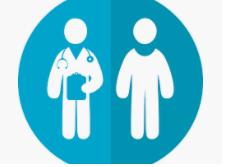The endless daily reports of possible vaccines and potential drugs to treat coronavirus all mention the need for clinical trials before the drug or a vaccine can be approved for use, but without making it clear what the trial involve. So it is not surprising that many people are curious as to what exactly is the purpose of these trials.
Moreover, others may be confused by the different phases involved in clinical trials. The bottom line is that clinical trials are necessary to provide critical data for a drug or a vaccine to show that it is above all, safe, as well as efficacious so that it can be approved for widespread use by the US Food and Drug Administration (FDA) or the EMA (European Medicines Agency), and similar agencies in other countries. These agencies require strict, unbiased, studies so that they can assess whether or not a drug is safe for human use.
In all phases of clinical trials, it is important to use a double-blind, placebo based protocol. A double-blind study is when neither the patient nor the doctor knows who got the drug vs the placebo. This is essential to remove any bias and be able to truly determine whether or not a drug is having any effect or not.
PRECLINICAL REQUIREMENTS
Prior to beginning clinical trials, a drug company is required to carry out animal studies to gain preliminary information so that they can apply for approval to initiate clinical trials in humans. Studies are first carried out in two different small animal models, such as mice, rats, rabbits, ferrets, golden hamsters, (others, depending on the disease). Once the efficacy and safety of the potential drug or vaccine have been determined, studies in larger animals such as dogs or primates are then carried out. Once the company has obtained the appropriate information, they can apply for an Investigational New Drug (IND) application and begin clinical trials after the IND is approved by the FDA.
THE FIVE PHASES
There are five basic categories of clinical trials: Phase 0, I, II, III, and IV; each stage is designed to provide different information to regulatory agencies as they assess whether or not a drug should be approved.
PHASE 0 TRIALS
It should be noted that originally there were only four Phases, however in 2006, the FDA added a fifth - Phase 0. Phase 0 is the most basic, exploratory, first-in-human trial that was initially designed to speed up the development of promising drugs. A single dose at a sub-therapeutic level, based on animal models, is administered to a small group (typically 10-15) of healthy volunteers to gather preliminary data about how and where the drug (or vaccine) interacts in the body, how it is metabolized and how and where it is excreted. Many companies still start with Phase I, skipping Phase 0 since its value is limited.
PHASE I TRIALS
Phase I expands the scope of Phase 0, looking at the safety, tolerability, and side effects of different dosages in a larger group (typically 20-200) of volunteers, although if a disease is particularly life-threatening or urgent, such as is the case with CoVID-19, then actual patients can be used rather than volunteers. Phase I trials, which are important to determine the potential dosage of the drug, typically last between a few months and a year. Phase I trials are further divided into two different groups, Phase Ia – single ascending dose studies, and Ib, multiple ascending dose studies.
In Phase Ia, small groups of volunteers (typically three) are given a single dose of a drug. If it proves safe and the volunteers don’t exhibit any negative side effects after several half-lives (the time it takes for half of the dose to be metabolized) of the drug have passed, the dose is increased and given to a new group of volunteers. This is repeated several times. If at any point any of the volunteers exhibit toxicity or negative side effects, the same dose is given to a new group to see if they also exhibit the same toxicity. This continues until unacceptable levels of toxicity or intolerable side effects appear, at which point the drug is said to have reached the maximum tolerated dose (MTD).
In Phase Ib studies, groups of volunteers receive multiple low doses of the drug, while samples of various bodily fluids such as blood, semen, urine, etc are collected at various time points and analyzed to assess how and where the drug is processed in the body, as well as where it is excreted, for example, in urine, blood, feces, semen, tears or even breast milk. The doses continue to be escalated up until the MTD is achieved. The FDA reports that approximately 70% of the drugs tested at this stage move on to Phase II.
PHASE II TRIALS
Once safe doses have been determined, a drug candidate can progress to Phase II trials. Similar to Phase I, Phase II also consists of two basic groups; Phase IIa and IIb. Phase IIb is called "proof of concept," where the drug is studied to see if it exhibits the desired biological effect, or in the case of a vaccine, that it can prevent the infection from occurring. Phase IIb also further assesses the safety and the side effects and explores the optimal dosing regimen in several hundred patients. These studies also involve sampling a broader, more diverse population to assess differences between sexes, ages, ethnicities, etc. Phase II trials typically last between 1-3 years, and typically 33% of the drug candidates move forward after this step.
WHAT ABOUT PLACEBO?
In all phases of clinical trials, it is important to use a double-blind, placebo-controlled protocol, as they are widely considered the gold standard of clinical trials. A double-blind study is when neither the patient nor the doctor knows who got the drug vs the placebo. This is essential to remove any bias and be able to truly determine whether or not a drug is having any effect or not, or if other factors are skewing the results. In addition, when there is a standard of care medication available, the placebo group will often receive the standard of care drug instead of the experimental drug, particularly if the disease is life-threatening. Regardless, it is important to note that all participants in clinical trials always received the best supportive care possible, such as fluids, medications to relieve other symptoms, and in the case of CoVID, supportive oxygen.
PHASE III TRIALS
Phase III trials are much larger, typically carried out with several thousand patients across multiple locations, including other countries, over a course of 2-6 years to further establish the efficacy of the drug, to monitor any adverse effects from long term use, and to expand the study to include patients with other underlying health conditions. In addition, Phase III studies compare the experimental drug with similar drugs on the market (when available). Phase III trials, not surprisingly, are the most expensive, time-consuming, and difficult trials to design and run but they must be conducted before the drug will be considered for approval. According to FDA data 25-30% of experimental drugs move forward to the next phase.
At this point, the drug can sometimes be used sold in a limited capacity (under strict guidelines) for compassionate care, as was the case for remdesivir during the recent Ebola outbreak. Phase III trials can are also be used to assess the market value or perception of the drug, as well as and to assess potential other uses for the drug. For example, Viagra was discovered during clinical trials for a drug that was originally designed to treat cardiovascular problems. Patients taking it developed an interesting side effect, and Pfizer ultimately chose to market it for erectile dysfunction rather than as a heart medication. These other uses can influence the FDA or EMA in their decision of whether to approve the drug or not. Typically at least two Phase III trials are required for final approval. During this process if any unexpected, serious adverse effects are noted, then the development of the drug is stopped. Phase III failures are especially painful for drug companies. Hundreds of millions of dollars can immediately go up in smoke
PHASE IV TRIALS
Phase IV (post-marketing) trials are used to follow the drug after it has been approved and has been on the market. Long term adverse effects, which may have not developed during the other phases, may show up over a longer period of time, especially with drugs that are used for chronic conditions or infections. Now, if unacceptable long term effects are noted, the drug is withdrawn from the market. Merck's 2004 withdrawal of Vioxx is probably the best-known example of post-marketing issues.
SUMMARY
The trials I have described, especially Phases II and III, are the primary reasons that drug development is so expensive. However, these trials are essential for proving that a drug is safe and effective. So, while some people outside of science are pushing hard for drug companies to skip clinical trials for the various vaccines and potential drugs currently being explored to fight the CoVID-19 pandemic, it is important to remember that appropriately designed studies must be carried out so that we can know for sure whether or not a drug or vaccine is indeed effective and safe, as well as to potentially avoid long term side effects that may not be immediately obvious.
Anecdotal information cannot be relied upon; it cannot tell us whether or not a drug or vaccine is actually having any effect, nor does it take into account safety, toxicity, potential drug-drug interactions with other medications, as well as potential long term side effects.




